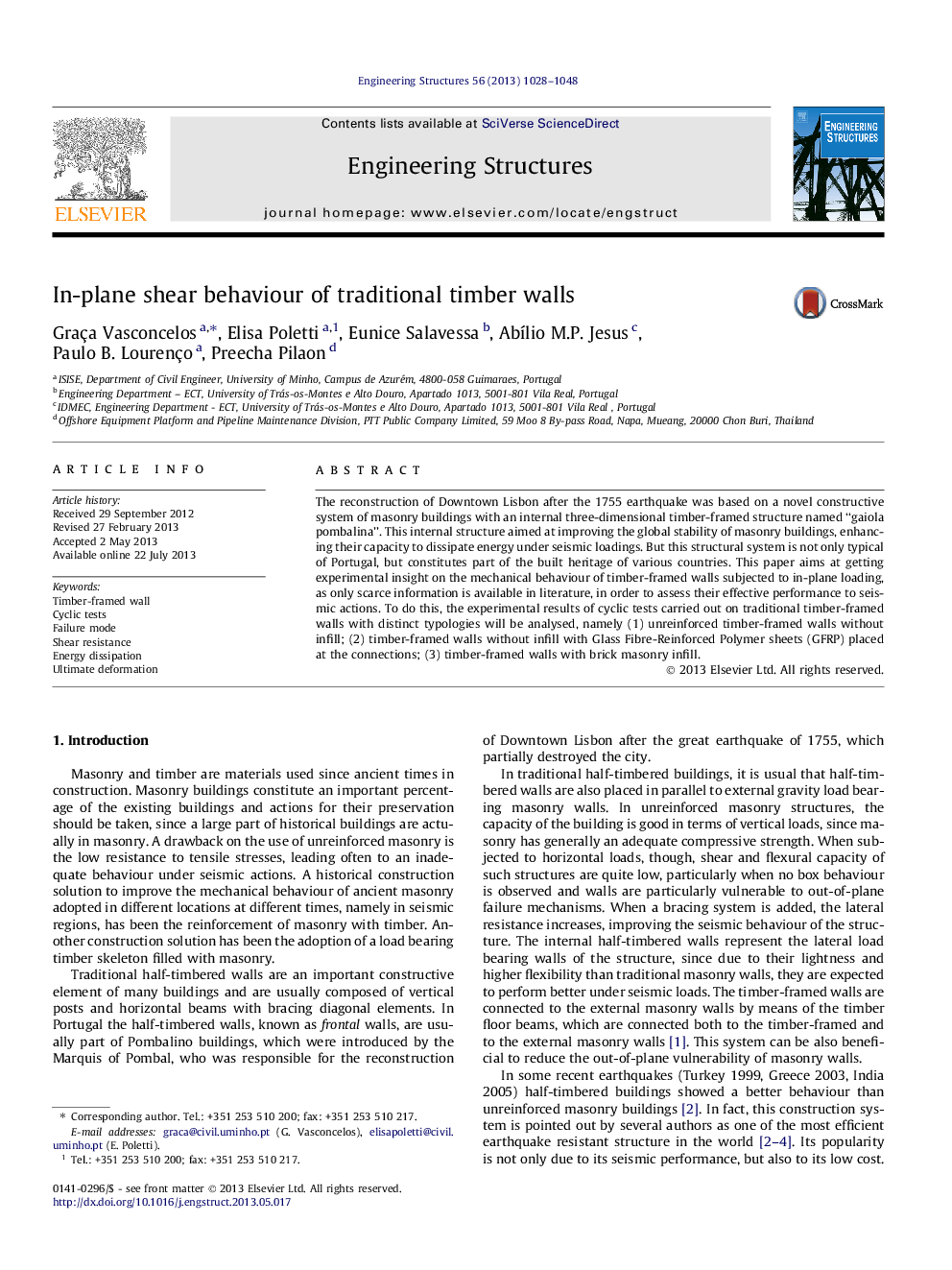| Article ID | Journal | Published Year | Pages | File Type |
|---|---|---|---|---|
| 6741469 | Engineering Structures | 2013 | 21 Pages |
Abstract
The reconstruction of Downtown Lisbon after the 1755 earthquake was based on a novel constructive system of masonry buildings with an internal three-dimensional timber-framed structure named “gaiola pombalina”. This internal structure aimed at improving the global stability of masonry buildings, enhancing their capacity to dissipate energy under seismic loadings. But this structural system is not only typical of Portugal, but constitutes part of the built heritage of various countries. This paper aims at getting experimental insight on the mechanical behaviour of timber-framed walls subjected to in-plane loading, as only scarce information is available in literature, in order to assess their effective performance to seismic actions. To do this, the experimental results of cyclic tests carried out on traditional timber-framed walls with distinct typologies will be analysed, namely (1) unreinforced timber-framed walls without infill; (2) timber-framed walls without infill with Glass Fibre-Reinforced Polymer sheets (GFRP) placed at the connections; (3) timber-framed walls with brick masonry infill.
Related Topics
Physical Sciences and Engineering
Earth and Planetary Sciences
Geotechnical Engineering and Engineering Geology
Authors
Graça Vasconcelos, Elisa Poletti, Eunice Salavessa, AbÃlio M.P. Jesus, Paulo B. Lourenço, Preecha Pilaon,
